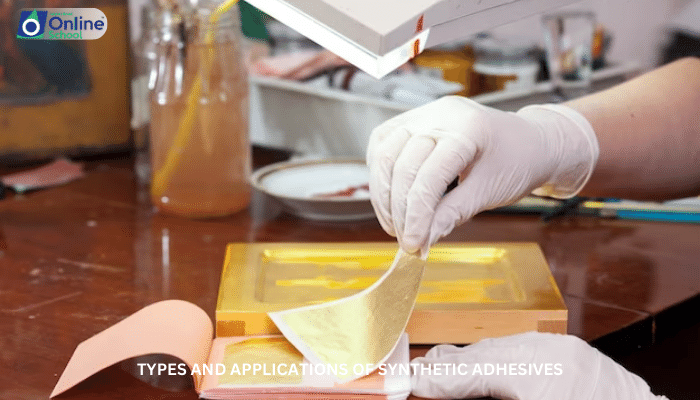
Learning Outcomes
By the end of this lesson, students should be able to:
i. Define the term adhesive and explain the concept of adhesion, the process by which two surfaces are bonded together.
ii. Identify the different categories of synthetic adhesives, including pressure-sensitive adhesives (PSAs), hot melt adhesives, and cyanoacrylate adhesives (superglues).
iii. Explain the mechanism of action of each type of synthetic adhesive, highlighting the role of physical and chemical interactions in achieving adhesion.
iv. Recognize the diverse applications of synthetic adhesives in various industries, such as construction, packaging, and electronics.
vii. Appreciate the importance of factors such as substrate compatibility, joint design, and curing conditions in optimizing adhesive performance.
viii. Understand the environmental considerations and safety guidelines associated with the use of synthetic adhesives.
Introduction
Adhesives, substances that bond two or more surfaces together, have played a pivotal role in human civilization, revolutionizing various industries and enabling the construction of complex structures. Synthetic adhesives, a diverse class of adhesives produced through chemical synthesis, have emerged as indispensable tools in modern society.
i. Pressure-Sensitive Adhesives (PSAs): A Sticky Touch
Pressure-sensitive adhesives (PSAs), commonly used in tapes, labels, and stickers, achieve adhesion through mechanical interlocking of the adhesive's polymer chains with the substrate surface.
Mechanism of Action: When pressure is applied, the adhesive's polymer chains deform and flow, allowing them to penetrate the microscopic irregularities of the substrate surface, forming a strong bond.
Applications: PSAs are widely used in packaging, labeling, and stationery applications due to their ease of use, clean application, and ability to adhere to a wide range of substrates.
ii. Hot Melt Adhesives: A Melted Bond
Hot melt adhesives, activated by heat, achieve adhesion through the formation of physical bonds between the cooled and solidified adhesive and the substrate surface.
Mechanism of Action: When heated, the adhesive melts, allowing it to flow and wet the substrate surface. Upon cooling, the adhesive solidifies, forming a strong bond.
Applications: Hot melt adhesives are commonly used in packaging, woodworking, and automotive applications due to their fast tack, strong bond, and ability to adhere to various materials.
iii. Cyanoacrylate Adhesives (Superglues): A Rapid Bonding Solution
Cyanoacrylate adhesives, also known as superglues, achieve adhesion through a rapid chemical reaction with the substrate surface.
Mechanism of Action: Cyanoacrylate monomers react with moisture on the substrate surface to form a crosslinked polymer network, resulting in a strong and durable bond.
Applications: Cyanoacrylate adhesives are known for their rapid curing speed and ability to bond a wide range of materials, including plastics, metals, and ceramics.
iv. Diverse Applications: Adhesives Shaping the World
Synthetic adhesives have permeated various industries, enabling the bonding of materials in a wide range of applications:
Construction: Adhesives are used in the construction of buildings, bridges, and other structures, providing strong and durable joints between various materials.
Packaging: Adhesives are essential for manufacturing cardboard boxes, labels, and other packaging materials, ensuring product integrity and protection.
Electronics: Adhesives are used in the assembly of electronic components, providing secure and reliable connections between delicate components.
Medical: Adhesives are used in surgical procedures, such as wound closure and dental bonding, providing strong and biocompatible bonds.
Synthetic adhesives, with their diverse properties and applications, have revolutionized various industries and continue to play a crucial role in modern society. Understanding the types, mechanisms, and applications of these adhesives is essential for appreciating their significance in shaping the world around us. As the demand for sustainable and high-performance adhesives grows, advancements in adhesive technology will continue to drive innovation and expand the boundaries of what is possible.